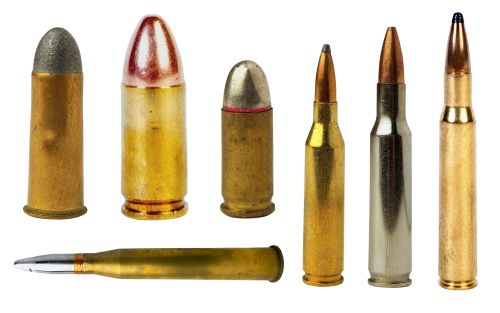Did you know that a single .50 caliber bullet can weigh as much as 52 grams? If you’ve seen a .50 caliber sniper rifle in movies, it looks like the jury, judge, and executioner. But believe it or not, big bullet size and bullet weight come with their own trade-offs. As cool as the .50 cal may be, it only works well in a select few instances.
Choosing the right caliber size can make a huge difference in your shooting application. When you’re reloading brass, you need to ensure you’re using the right bullets and powder weights. Failure to do so could result in DOA ammunition or serious safety risks.
Join us as we discuss the tips for choosing the right bullet size.
What Activity You’re Going for Will Determine Bullet Size
For someone who’s unfamiliar with firearms, it may seem like any bullet can work at any task. A gun is a gun, a bullet is a bullet. Right?
Nothing could be further from the truth. The length of the barrel, action type, and other features all go a long way to affect a gun’s performance. The type of ammunition a weapon uses is of equal importance.
A minor tweak to, say, bullet diameter can make a drastic impact on a bullet’s effectiveness. It can affect bullet speed, velocity, stopping power, and even accuracy. Some bullets work better for specific targets.
The type of bullet you use will determine whether you can take it hunting, or only use it for target practice.
So the question you need to ask yourself is this: what exactly will you be using this bullet for? The answer to that question will inform your decision.
Choose the Right Caliber
When reloading brass, take careful note of the caliber type stamped on the bottom rim. It’s a very bad idea to load new bullets by eyeballing the size.
Case in point, the .223 and 5.56.
Hold these two rounds up side by side, and most people struggle to find any meaningful difference. They have the same shape, length, and bullet diameter. By all accounts, they are the same bullet and you can fire them from the same rifle.
But if you do that, you risk serious damage to your rifle–and a potential threat to your own well-being. The 5.56, while seemingly identical to the .223, shoots at a higher pressure. It’s a military round designed to hit targets much harder.
Some bullets have a much higher velocity, making them ideal for target practice and hunting. Some have superior stopping power, making the ideal for self-defense. You need to research bullet types based on the characteristics that matter to you.
Do your research before reloading. You want to be 100% sure you have the right brass and the right bullet size. And get quality once-fired brass that will last multiple reloading sessions.
Choose the Right Bullet Type
Not all bullets are equal, and all of them serve a different purpose.
For example, hollow point and full metal jacket bullets. One has a hole bored into the bullet tip. The other has a copper jacket covering the round.
The hollow point spreads into a flower shape when it enters the target. This makes it ideal for hunting and self-defense. It excels in stopping fleshy targets by causing extreme trauma to their cardiovascular system.
But the full metal jacket, on the other hand, does not open. It’s tough and will go straight through most materials. As such, it’s an ideal round for when you need to pierce armor.
That makes it less than ideal to have this type of round in a handgun you keep by the bedside. If you shoot an intruder, it may stop them. But the bullet will go straight through them, the wall, and land in your innocent neighbor.
There are a lot of bullets to choose from. Some have plastic tips, which expand from the heat and do damage similar to the hollow point. Some have exposed lead tips, for a similar effect without deforming in flight.
Heavier bullets may provide more stopping power, at the cost of heavier recoil. They may require a special casing that can handle the more extreme pressure.
Again, your use case will determine which is ideal for you.
Choose the Right Amount of Gunpowder
Gunpowder plays an important role in how your rounds will perform.
For example, subsonic rounds. These are rounds that travel below the speed of sound. As a result, they make very little noise when fired.
Putting less gunpowder in a certain rifle casing could lower its velocity. It could make the rounds drop off, ruining your accuracy. This could also make it difficult for your firearm to cycle the action in a semi-automatic fashion.
Put extra gunpowder in your rounds, and you get the opposite effect. Guns may have more velocity and more stopping power. But put more gunpowder than your gun or rounds are designed for, and you could damage the weapon and harm yourself.
Most calibers have a set grain. This is how many grams of gunpowder you should load into your weapon. As you can imagine, larger calibers require a higher grain than smaller calibers, but even this depends.
If you need this firearm for hunting, self-defense, or long-distance shooting, you may require a higher grain. Whatever the case, research how much your firearm is designed for. The wrong grain could lead to serious consequences.
Purchase Your Brass in Bulk
Bullet size has a more significant impact on shooting performance than most realize. Small tweaks to even the bullet weight can have trickle-down consequences on bullet speed and accuracy. Make sure you know what bullet size you need before reloading brass.
During the pandemic, ammo shortages have left many without the ability to stock up. It’s time to reload your own ammunition. Make sure to buy your brass in bulk before you hit the reloading bench.

